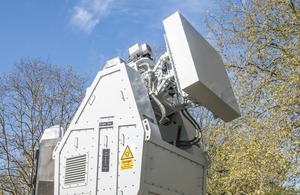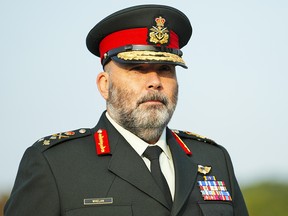
Lockheed Martin assembles F-35s at its plant in Fort Worth, Texas. Lockheed Martin
The program is trying to quash bugs that force pilots to reboot in midair, GAO says.
May 16, 2024
The Pentagon has refused delivery of so many F-35s that Lockheed Martin is running out of places to put them, according to a new report from a government watchdog agency.
Last July, the government stopped accepting new F-35s because of hardware and software delays with Technology Refresh-3, a $1.8-billion effort to enable new capabilities for the jet.
The number of jets accumulating outside Lockheed’s plant is “grossly delinquent,” Rep. Rob Wittman, R-Va., chairman of the House Armed Services tactical air and land forces subcommittee, told reporters Wednesday.
“We know one thing for certain: it’s going to be at least over 100 aircraft stacked up on the tarmac,” Wittman said.
The GAO report did not say how many aircraft are currently parked, saying the Defense Department deemed that figure “unsuitable for public release.”
But the report said that Lockheed would need to rethink its plans.
“If TR-3 software is delayed past April 2024, Lockheed Martin is projected to exceed its maximum parking capacity and will need to develop a plan to accommodate more parked planes,” it said.
Lockheed officials say they have all the infrastructure and capacity they need to park the aircraft until they are ready for delivery.
“Specific details about parking will not be shared due to security considerations,” officials said in a May 16 statement.
The situation is financial pain for Lockheed: the Pentagon is withholding payments of $7 million for each undelivered TR-3 jet, Bloomberg previously reported.
The government as well will face “significant liability” if any of the parked aircraft get damaged or lost while sitting at Lockheed’s facilities, according to the report.
“It is unique for so many critical DOD aircraft to be waiting for DOD acceptance, instead of stored at lower densities across many military locations throughout the world. This creates unique financial and schedule risks to DOD,” GAO said.
Once the TR-3 upgrade is ready, it will take about a year to deliver all of the jets Lockheed has parked, GAO said.
But challenges with software stability and delayed hardware are pushing the delivery of full TR-3 capability to 2025, the report said. The first TR-3 jets were supposed to be delivered last July.
The Pentagon is working on a plan to restart accepting the jets without the full TR-3 upgrade because, officials say, a part-capability is better than nothing. Those deliveries could start up as soon as July, officials say, but the interim version of the upgrade won’t be combat-ready and will only be used in training.
“According to program officials, this initial TR-3 software will allow the program to accept delivered aircraft but not deliver any new capabilities to the aircraft. TR-3 software with new capabilities will not be delivered until 2025, two years later than originally planned. This means the warfighter will continue to wait for these critical upgrades,” GAO said.
Specifically, the TR-3 software has had trouble supporting the F-35’s radar and electronic warfare systems. Some test pilots have said that they had to reboot their radar and
electronic warfare systems mid-flight, according to the report.
“Program officials stated that early versions of radar and in-flight systems software can commonly experience rebooting issues. However, even after being nearly a year delayed, TR-3 software continues to be unstable, according to test officials,” GAO said.
House lawmakers have grown so frustrated with the program that they have proposed cutting the Pentagon’s F-35 buy in the House Armed Services chairman’s mark of the fiscal 2025 policy bill—and fencing off the delivery of 10 more jets until problems are addressed.
The proposed bill would take the resources that were allocated to buy more jets and use them to create a digital twin of the F-35 and an integrated software laboratory. It’s “astounding” that Lockheed hasn’t modernized how it develops software and hardware for the program, Wittman said.
“We also believe that the resources from the 10 aircraft that will go to an integrated software laboratory, to digital twin testing, to additional test beds—all those things are capabilities that should have been done years ago and haven’t been done and that’s why we’re so far behind where we are today. So we are saying, you know what, we’re not going to leave this to chance anymore. We’re going to take an active role,” Wittman said.
The F-35 program is on track to cost over $2 trillion, making it the world’s most expensive weapons program.



